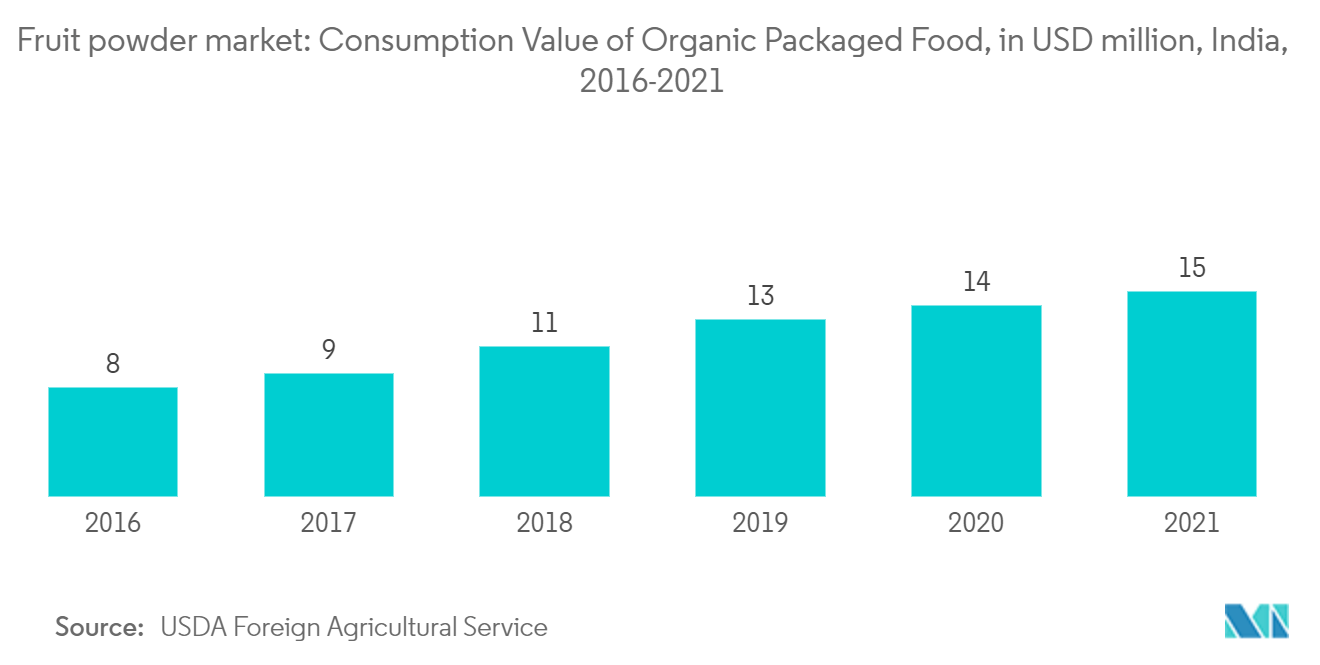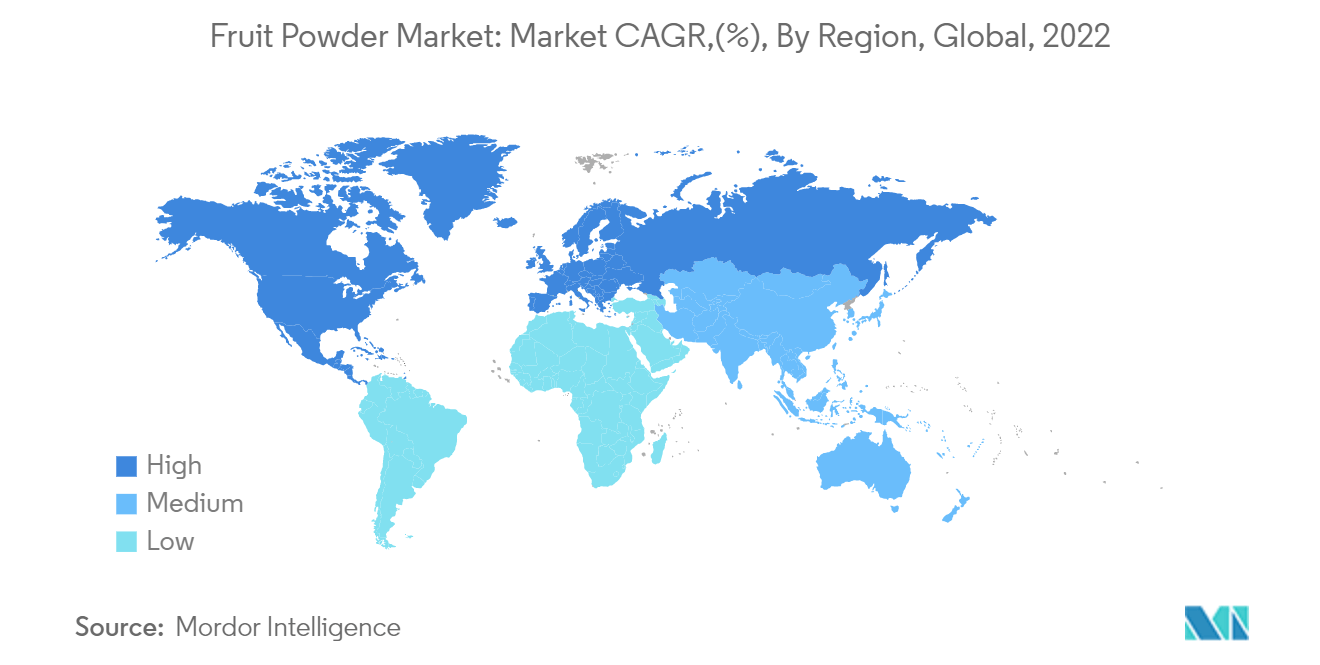Market Trends of Fruit Powder Industry
Growing Consumption of Organic Fruit Powder
According to USDA Foreign Agricultural Service; Global Organic Trade Guide, the consumption value of packaged organic foods in India totaled about USD 15 million in 2021. When compared to 2020, when the consumption value was USD 14 million, this represents an increase. In 2022, the consumption value is probably going to rise to USD 17 million.
The way consumers perceive organic food products can be seen in their purchasing patterns, which are changing continuously with time. The effects of organic products on consumer health are the most influential factors for the expansion of the organic products market. This, in turn, is increasing the demand for organically processed fruit powder in different end-user industries. For instance, organic food sales in the United States increased by a record 12.8% in 2020 to a new high of USD 56.4 billion, according to the Organic Trade Association. Almost 6% of the food sold in the United States last year was certified organic, reflecting strong, pandemic-driven demand across nearly every organic food aisle. The rise of organic and clean-label fruit powder ingredients can be seen all across the industry. Thus, Fruit d'Or Nutraceuticals introduced organic cranberry juice powders to both the beverage and dietary supplement markets.
For instance, Nutra Organic is claimed to be certified by Australian Certified Organic (ACO), and they are made from organic raw ingredients, the company claims that they opt for Refractance Window Technology, a minimal processing technology that ensures each fruit and vegetable all products retain their raw qualities, flavor, color, and nutrition. The company manufactures organic fruit and vegetable powders

Europe Holds the Major Share
Major drivers of the fruit powder ingredient market in Europe include an aging population, increasing demand for nutritional and functional foods, particularly bakery products, and increased health concerns among consumers. Germany and France dominate the regional market. The food processing ingredients industry is highly focused on sustainability. This indicates that most companies have an in-built sustainability strategy that creates continuity in the entire flow, from cultivation to food processing. For instance, retail outlets are increasingly demanding a sustainability commitment or proper labeling from ingredient manufacturers. Germany provides a favorable geographical location for fruit ingredient manufacturers, as it is centrally located in Europe with extremely well-developed transportation channels and well-situated food processors to export fruit powders to other European countries. Symrise (Diana Group) and Naturex are some of the companies selling fruit powders in the region.
For instance, according to the CBI Ministry of Foreign Affair, in November 2022, health is a concern for food supplement consumers. They seek out products that promote a healthy way of life and typically favor natural and organic products. The perception of organic products as being of higher quality, safer, and devoid of synthetic chemicals are important reasons influencing rising consumer demand for them in Europe. Additionally, buyers are looking for certified organic baobab as a guarantee of reliability and high quality. Quality and contamination are two of the main issues for European purchasers. In poor nations, baobab powder is usually made by shattering the fruit and scooping out the pulp. The powder is separated from the pulp by pounding it with a pestle in a mortar. The baobab powder is then packaged and sieved. Because processing is frequently decentralized, the methods of processing and storing do not adhere to European regulations. In countries such as the United Kingdom and Germany, consumers have a high awareness of the baobab fruit and its beneficial properties. This fruit powder contains a significant portion of vitamins, particularly vitamin C; minerals like calcium, potassium, and phosphorus; Almost 50% of the diet is made up of soluble and insoluble fiber. (About 78%) Carbohydrates and (2-3%) protein


